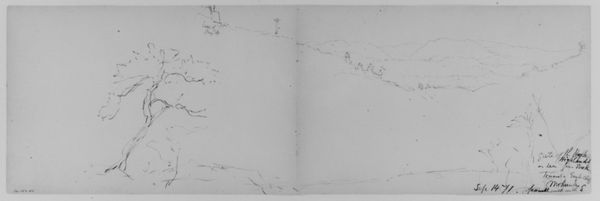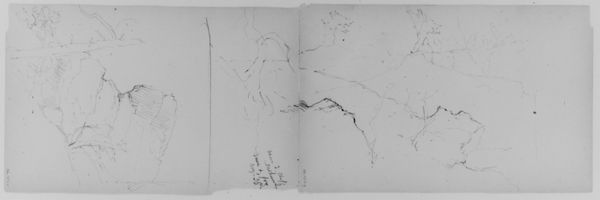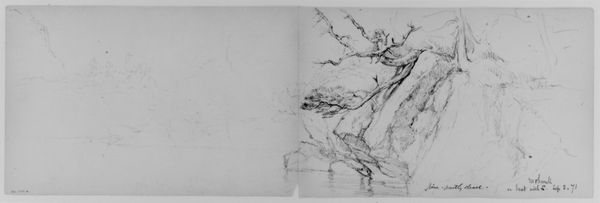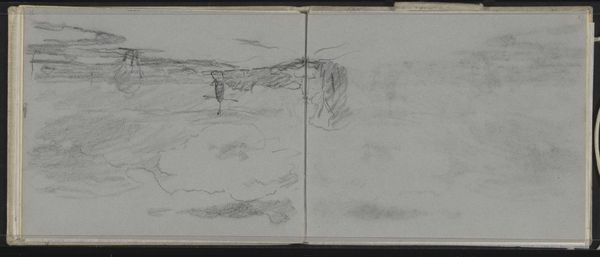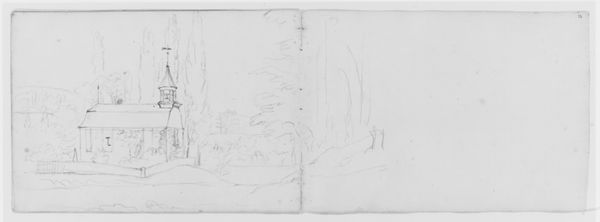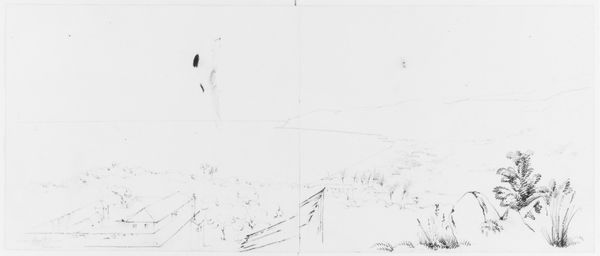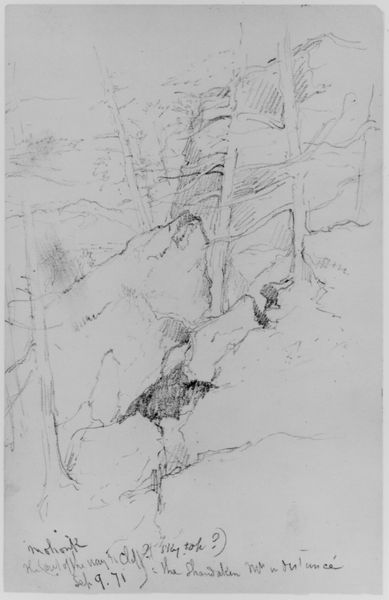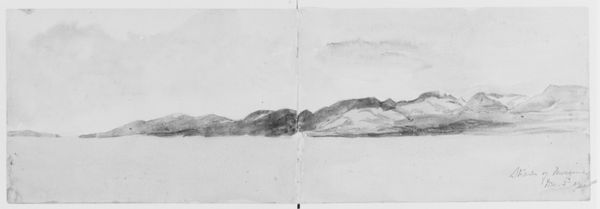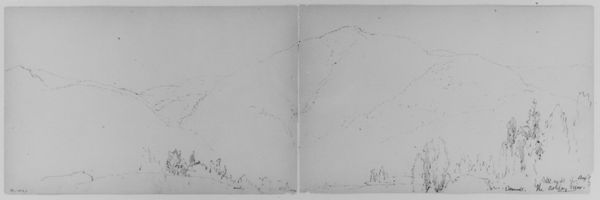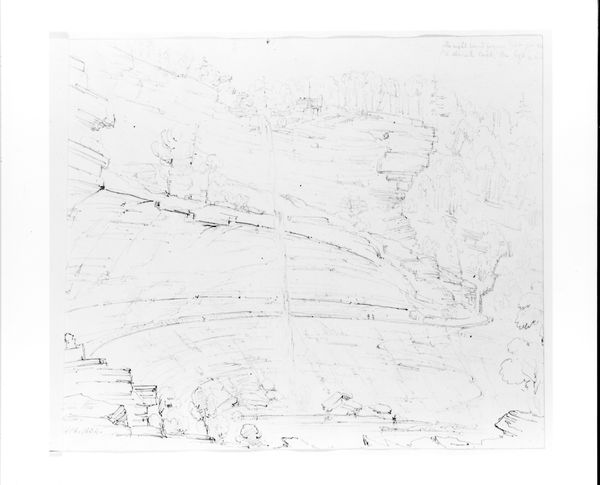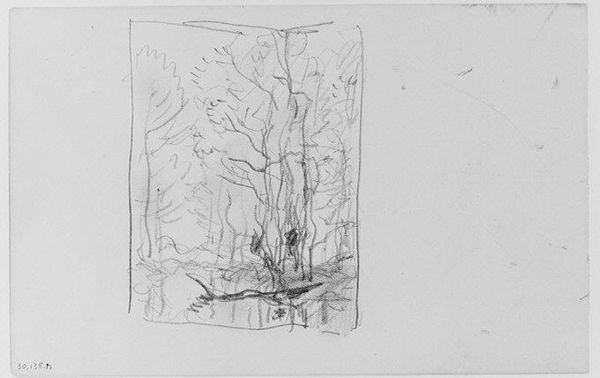
Pine Cliff, Mohonk, 1871 (from Sketchbook) 1870 - 1871
0:00
0:00
drawing, paper, ink
#
drawing
#
ink painting
#
landscape
#
paper
#
ink
#
hudson-river-school
#
watercolor
Dimensions: 5 1/2 x 8 3/4 in. (14 x 22.2 cm)
Copyright: Public Domain
Editor: Here we have Daniel Huntington’s "Pine Cliff, Mohonk," dating from around 1871. It's an ink drawing on paper, currently residing at the Metropolitan Museum of Art. The delicate lines suggest both a sense of grand scale and of intimacy, but what catches your eye? What do you see in this piece? Curator: For me, it is about understanding Huntington’s labor and his engagement with industrializing America through his landscape drawings. Notice the level of detail achieved with simple ink—the repetition, the cross-hatching. How does that speak to you regarding production of this work, its making? Editor: Well, it looks painstaking. There's an incredible amount of precise, repetitive mark-making that seems at odds with the grandeur of the natural landscape. I mean, to represent something so vast with such deliberate, crafted marks feels like a contrast. Curator: Exactly! Now consider the broader context. The Hudson River School romanticized nature, but at the same time, industrialization was rapidly changing the American landscape. Is Huntington critiquing this by highlighting labor’s role in shaping even our perception of nature through this crafted drawing? Editor: So, he's showing us not just the cliff, but also reminding us about all the human effort—the artistic labor involved in creating an image of that cliff and maybe reflecting labor that exploits it? I hadn't considered that tension. Curator: And how does this piece's existence as part of a sketchbook alter your perspective of it as an art object produced within its time, considering its purpose? Editor: Interesting point. Thinking of it as a sketchbook page… well, that suggests a utilitarian purpose, perhaps a study for a larger painting, a tool. That makes me consider how even so-called ‘high art’ relies on this more practical work, pushing against those established hierarchies. I never would have seen that without your perspective. Curator: And that is why understanding materiality is critical in analyzing art of this time.
Comments
No comments
Be the first to comment and join the conversation on the ultimate creative platform.


